You can trust Cyclingnews
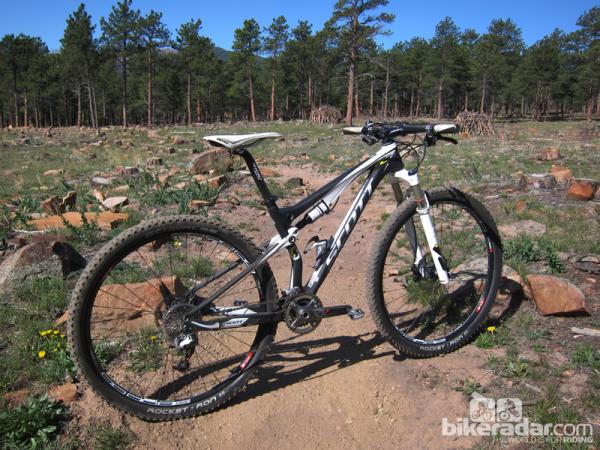
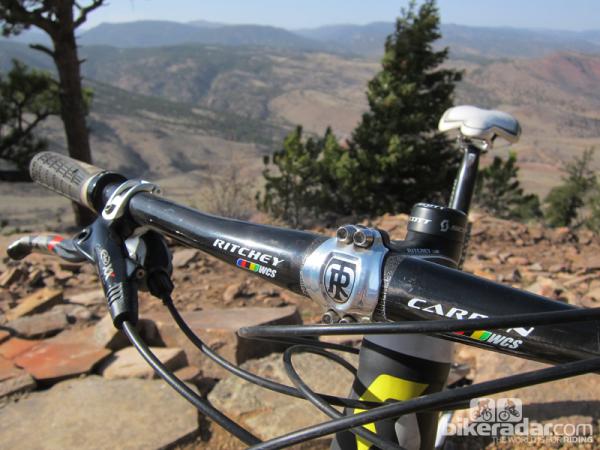
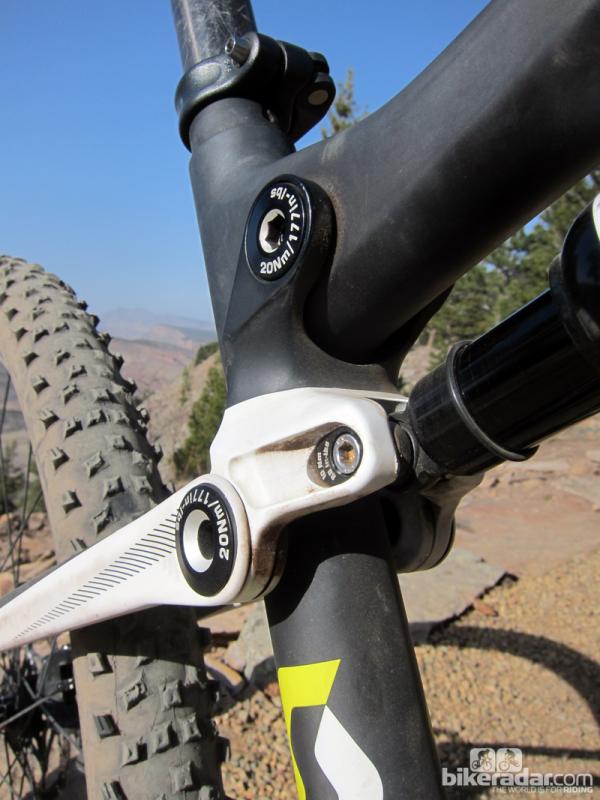
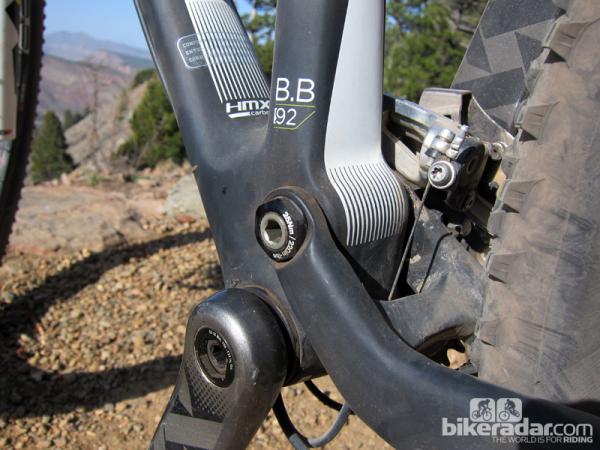
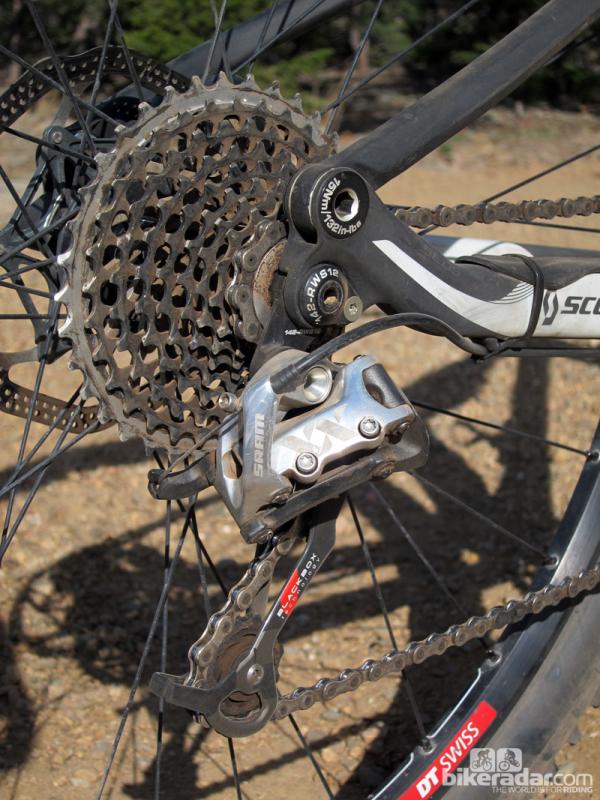
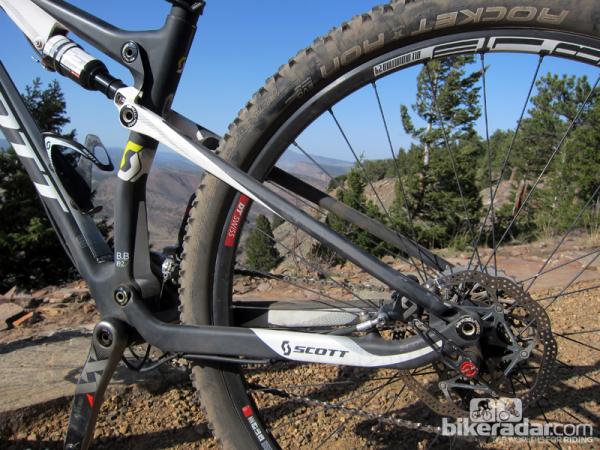
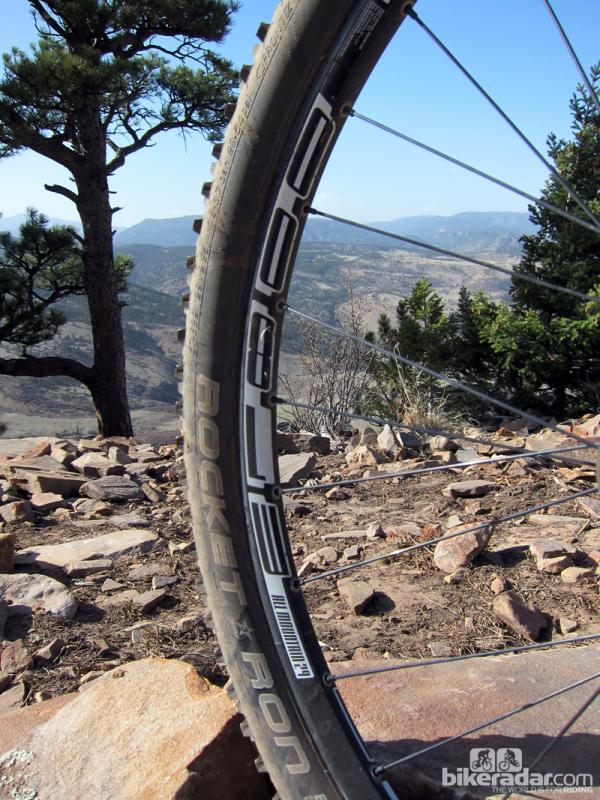
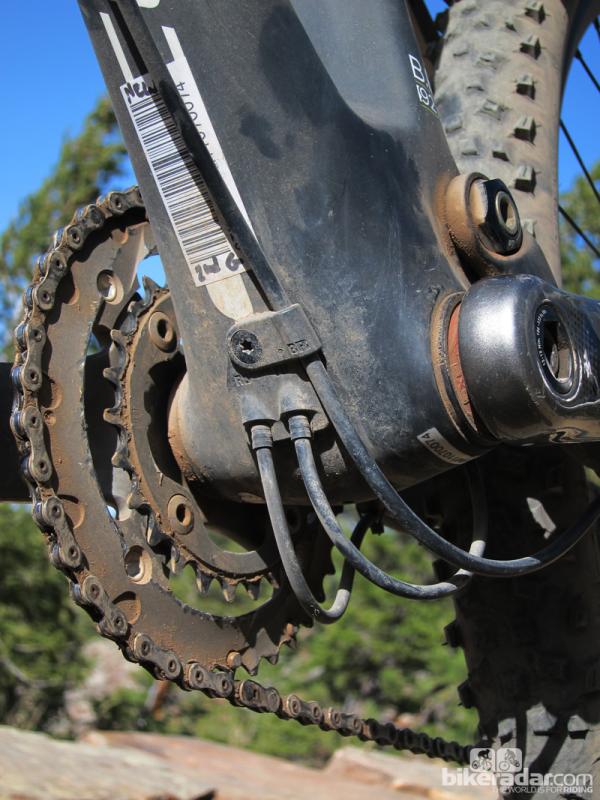
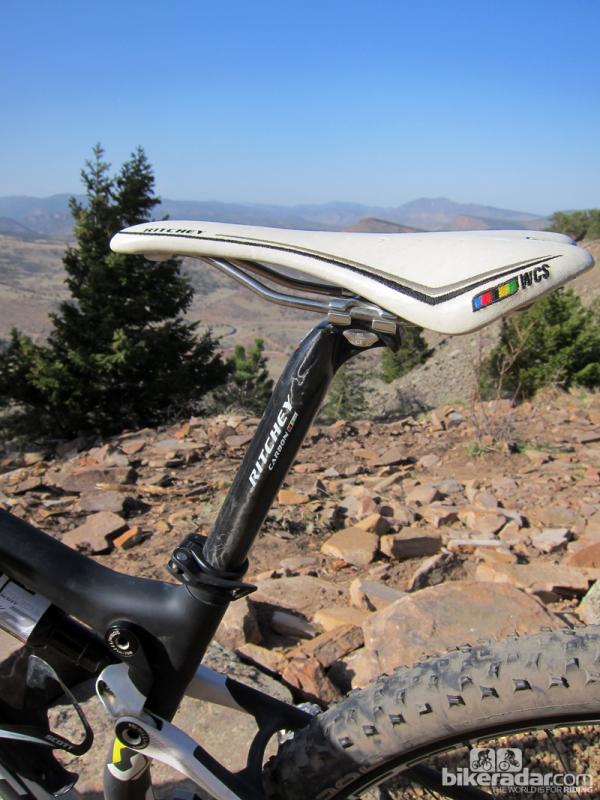
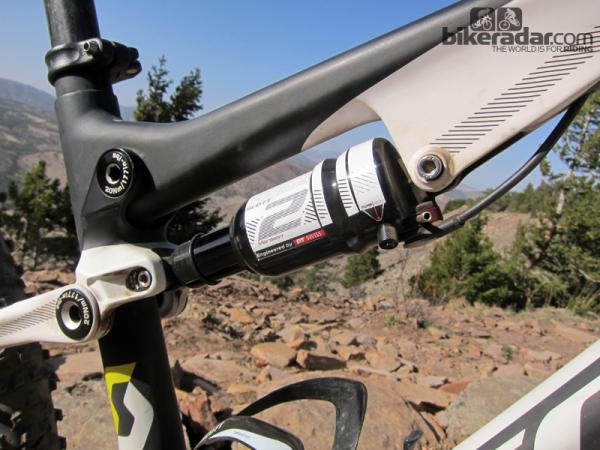
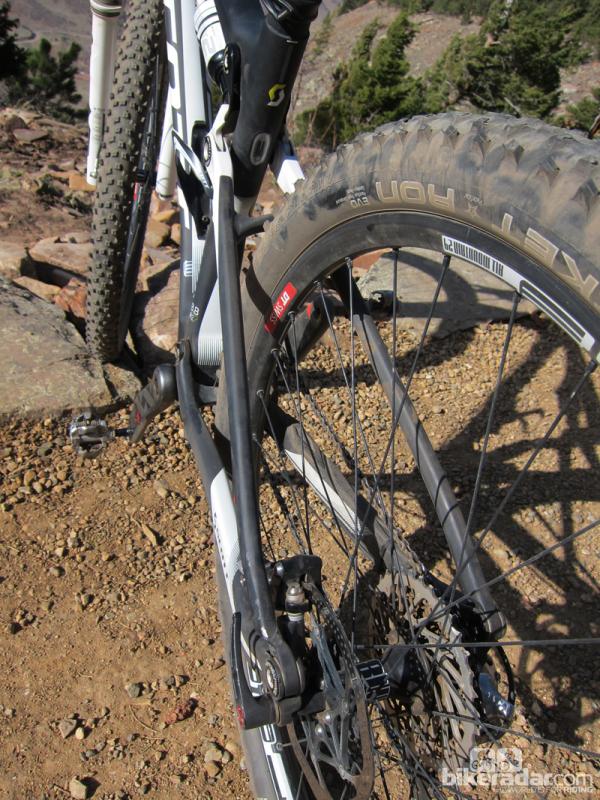
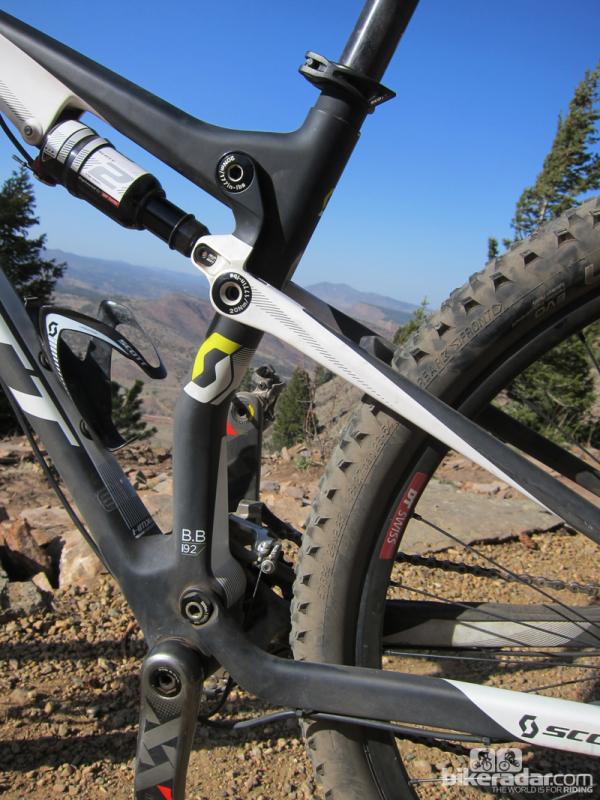
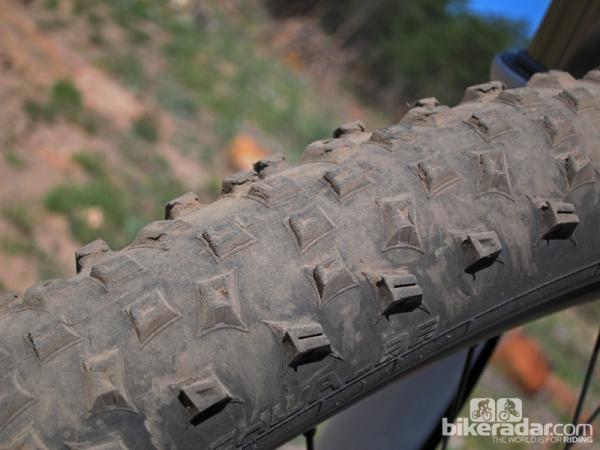

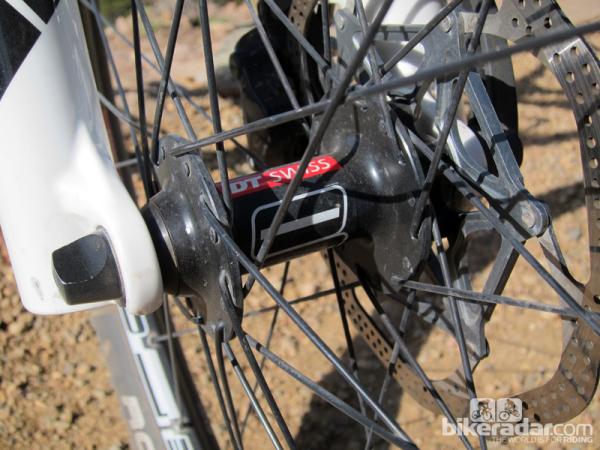
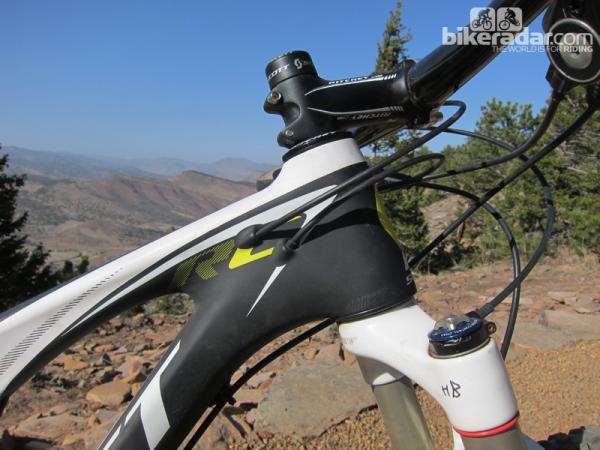
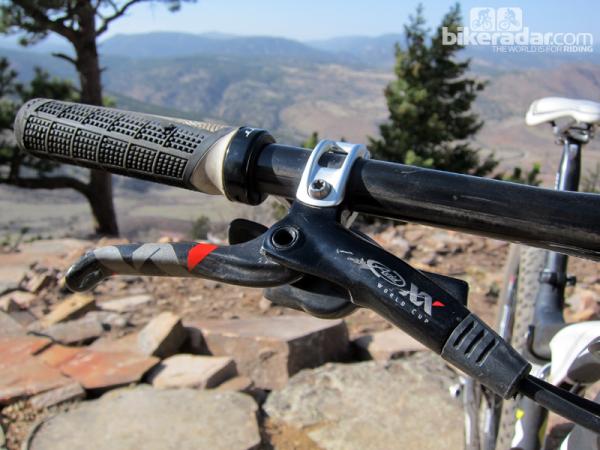
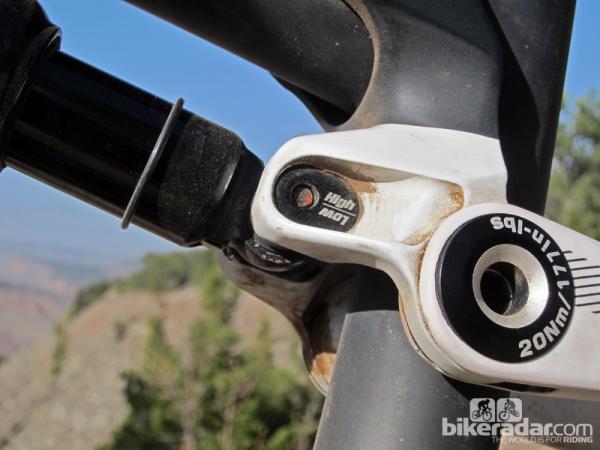
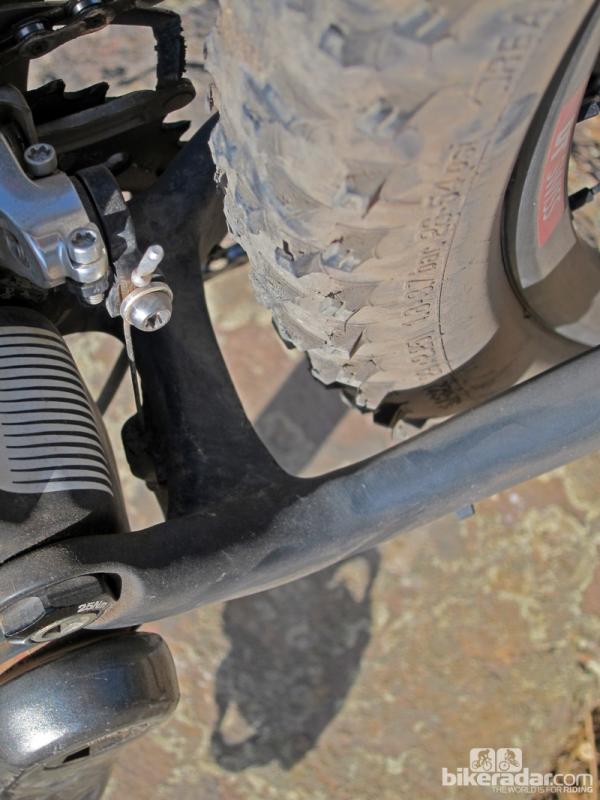
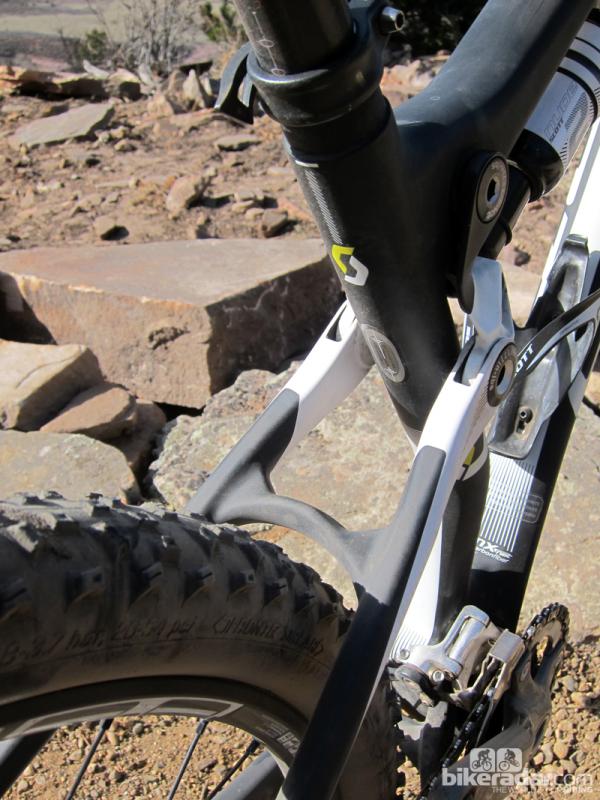
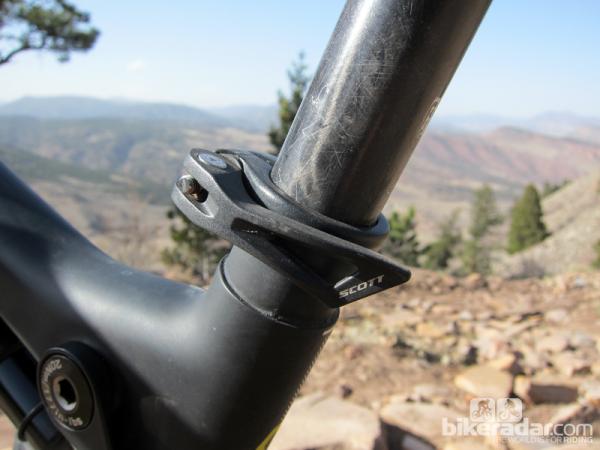
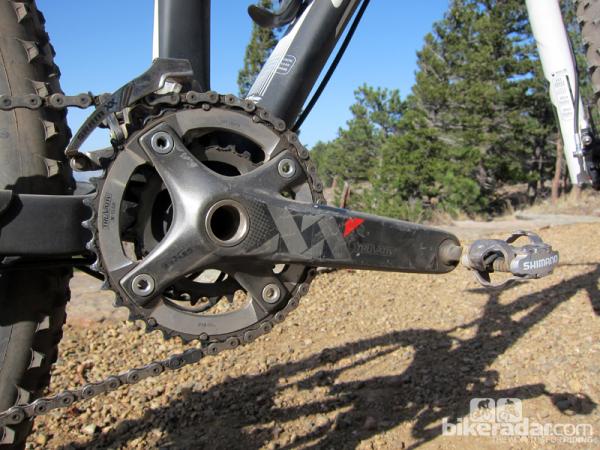
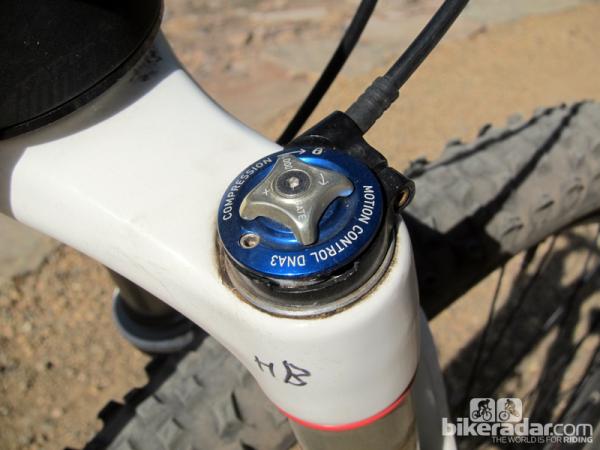
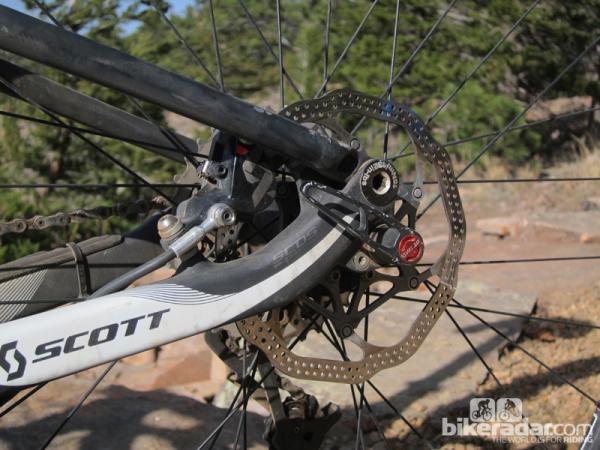
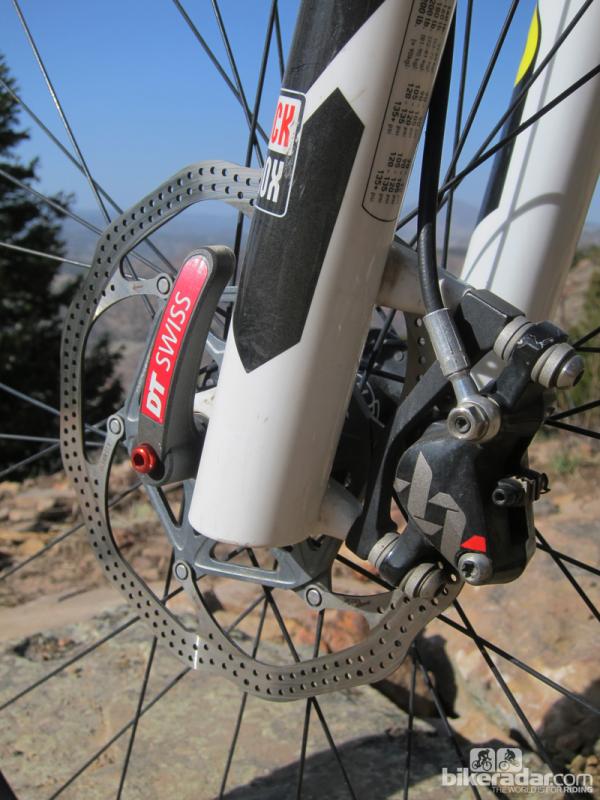
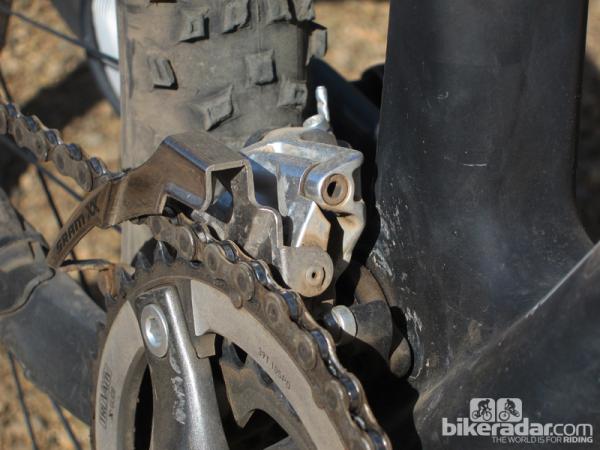
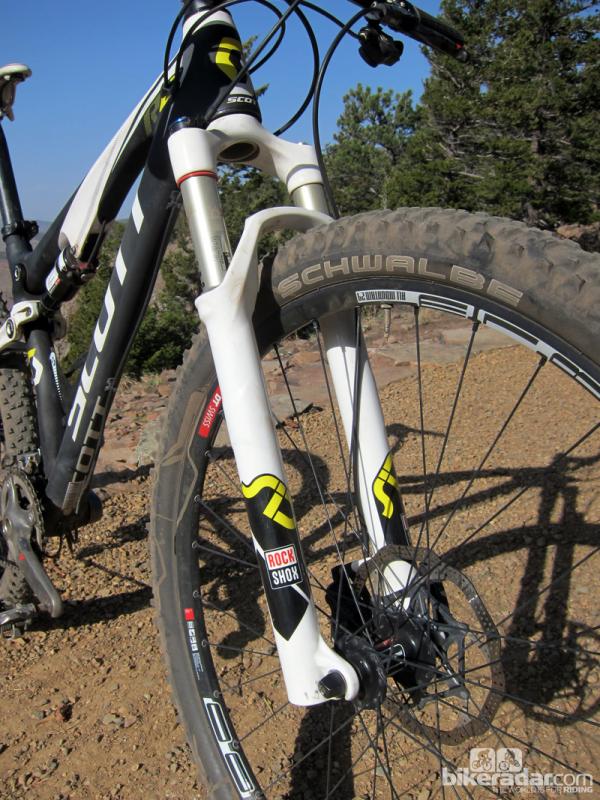
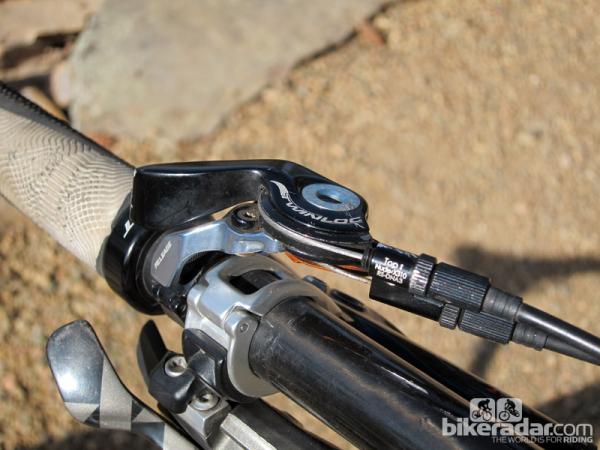
This article originally published on BikeRadar
Scott's first-generation Spark was not only a great race bike but a surprisingly capable trail machine, too, and the addition of 29er wheels on the Spark 29 RC has added fantastic high-speed manners and obstacle-leveling, monster truck-sized rubber. Six months of hard testing have confirmed our initial impressions, though: handling is fantastic but the rear suspension performance feels well behind the times and unfortunately it's not something that's easily rectified.
Ride and handling: awesome geometry, yesteryear suspension
Scott rests much of the Spark 29 RC's suspension performance on the Twinloc handlebar remote system, which ties the fork and rear shock together and allows users to select one of three modes to suit the terrain at hand. The full 100mm of front and rear travel are available in the open mode; 'traction' mode reduces rear travel to 70mm and increases compression damping at both ends; and lockout does just that, limiting suspension travel is virtually zero for maximum efficiency on smooth ground.
It's an enticing concept for sure with each mode delivering very tangible differences in suspension tune and the remote itself being well made and easy to operate. The only problem is that we weren't entirely satisfied with any of the three settings. The core issue in our eyes is the DT Swiss Nude 2 rear shock, whose technology feels generations behind similar high-end competition from FOX or RockShox.
The fully open mode is neither especially efficient nor active. Small bump sensitivity is particularly lacking (something we've noted with most DT Swiss suspension products we've tested) and yet there's also no platform valving to resist pedal bob or to counteract rider weight shifts (more on this shortly) – a shame since the carbon frame is remarkably light, admirably stiff, and otherwise resistant to energy robbing flex. Fellow riding partners frequently commented on the bike's persistent bob during test sessions.
Traction mode improves pedaling efficiency substantially and also raises the sag point so the rear end doesn't sink too far into its travel on steep climbs — something damper-based systems like FOX's ProPedal don't offer, and one of the most positive aspects of Scott-DT system. This unfortunately also makes the rear end so firm that grip on technical climbs suffers as a result, especially when the trail is littered with loose, square-edged rocks that more active systems easily tackle — the exact opposite effect of what's suggested by the 'Traction' mode name.
Moreover, front-end traction suffers as this second-generation Twinloc system now increases the fork's compression damping in the middle setting, too (prior Twinloc systems left the fork fully active in this setting). Rather than smoothly roll up and over obstacles on bumpy climbs, we found the front wheel to frustratingly hang up and stall.
True to its racing intensions, the final Twinloc setting provides one of the firmest lockouts we've sampled in years — the rear end simply does not move at all while pedaling and the front only moves as much as you tune it to via the RockShox SID's Floodgate setting. That being said, the Nude 2 rear shock once again feels disappointingly crude with an unusually high blowoff threshold and a jarringly bouncy feel when you do hit something. While it's true the Nude 2 is an improvement over the original Spark-specific Nude shock. It's true that things have progressed substantially since then, but DT Swiss seem to still be falling behind the curve.
We tried a wide range of inflation pressures on the stock shock but only after we swapped the DT unit for a FOX Float RP23 Adaptive Logic Boost Valve rear shock were we actually content with the performance, and amazed by the difference. Not only was the Spark 29 RC dramatically smoother (much, much faster), and vastly more composed in the fully open setting, but the Float's advanced platform valving also provided a more balanced feel overall.

The DT Swiss Nude 2 rear shock is an improvement over the original version but it's still well behind what's available from FOX or RockShox
Pedaling efficiency was nearly on par with the stock Traction mode setting but bump performance improved by what felt like decades – and we didn't have to constantly flip between settings, either. The only thing we missed was how the DT Swiss shock holds the rear end up in Traction mode but it was a sacrifice we were willing to make. Unfortunately, making such a switch would be an expensive proposition for average consumers.
As big an improvement as we got by swapping out the rear shock, that still didn't solve the Spark 29 RC's other critical fault: the main pivot placement. Frame designers have now proven time and again that single-pivot rear ends can work very well but this doesn't feel like one of those times. As it is, the main pivot is too low, producing inefficient pedaling and a disappointingly wallow feel.
In catering to the new-school 2x10 drivetrain systems, Scott's frame designers have shifted the Spark's main pivot down a few millimeters, roughly lining it up with the inner chainring to yield theoretically neutral pedaling traits. However, with no platform valving in the shock and no built-in anti-squat in the swingarm geometry, the Spark 29 RC still doesn't scoot up climbs as it should.
Conversely, optimizing pedaling in the inner chainring then negatively affects pedaling in other gear combos. Hard pedaling in the big ring is especially disappointing when the Twinloc is in open mode with every effort met with appreciable wallow.
On the positive side, Scott has absolutely nailed the Spark 29 RC's frame geometry with thoroughly modern figures plus a two-position 'chip' system that allows users to further tune the handling. Head tube angle varies between 69.5° and 70.1°, the bottom bracket sits at an ultra stable and nimble 317mm or 324mm off the ground, and the chain stays are a relatively short 448mm for easier manuals and bunny hopping. Capping things off are the comparatively short 90mm stem for our medium-sized test bike and a usefully wide 680mm flat carbon bar set at a smart height atop the stubby 105mm-long head tube.
As a result, high-speed runs are an absolute blast on the Spark 29 RC and the impressively nimble chassis is gleefully fun to throw around when a bunch of swoopy turns are thrown into the mix. It's low and planted on fast, technical downhills, agile enough to deftly change direction when needed, and child's play to drift through loose and slippery corners. Sure, there's still no hiding the bigger dimensions of the 29" wheels in super tight switchbacks but ramp up the speed and the Spark 29 RC really comes into its own.
Frame: ultralight carbon construction
Scott has long been at the forefront of ultra-lightweight carbon construction and the Spark 29 RC continues the trend with a fantastic 1,990g actual weight for a medium frame with rear derailleur hanger, a curiously chunky quick-release seatpost collar, the direct-mount front derailleur stub, and water bottle bolts – a stunning figure for a 26" bike, let alone one that has to accommodate bigger 29er wheels.
Updates from the previous Spark include a tapered head tube, internal cable routing for the derailleur lines (which aren't a total nightmare to replace if you're smart about it, by the way), post mount tabs for the rear disc caliper (sorry, 140mm rotors won't fit), and a direct-mount front derailleur that rotates with the swingarm for better shift performance throughout the travel range.

Rear-end stiffness is very good, thanks in part to the 142x12mm axle. We sorely missed having a through-axle up front, though
Stiffness on the one-piece front triangle and nearly all-carbon rear triangle stiffness are both very good due in part to Scott's top-end HMX carbon fiber blend and it's thankfully a noticeable improvement over the strangely soft pre-production sample we rode during the launch last July. Helping in that department is the new-for-2012 rear 142x12mm thru-axle.
Unfortunately, Scott has perplexingly stuck with a quick-release fork. It's noticeably more prone to flex and has a tendency to load and release in tight corners with lots of grip. Moreover, the included DT Swiss RWS 'ratcheting' skewer (sorry, DT Swiss, this isn't a ratchet; it's a repositionable lever) doesn't clear the fork legs, making it frustratingly slow to use. Scott wisely incorporates interchangeable rear dropout inserts should buyers also have conventional 135mm-wide quick-release wheels in the stable they want to use but it's certainly not an easy conversion up front. We would have preferred the opposite configuration if we had to choose just one but ultimately, both would have been better.
Aesthetically, Scott has hit a home run with the sleekly low-slung design that offers tons of standover clearance and easy maneuverability when you really want to throw the bike around. The new one-piece shock linkage is cleanly integrated into the structure than before, too. Toss in the fetching paint scheme and it's certainly delivers an impressively cohesive overall appearance.
Equipment: solid SRAM XX and Ritchey carbon bits but so-so wheels
Our early production sample — supposedly the first media tester in North America according to Scott PR man Adrian Montgomery — wasn't completely accurate in terms of spec but it was close enough for our purposes. Scott has done a good job overall of dressing the Spark 29 RC with race ready gear, including a complete SRAM XX group, a custom RockShox SID 29 RLT3 fork, and a bunch of lightweight kit from Ritchey such as the WCS Carbon seatpost, a WCS 4-Axis 44 stem (consumer bikes will get a WCS C260), and a 680mm-wide WCS Carbon flat bar. Total weight as pictured was a fantastic 10.5kg (23.15lb) without pedals but with a makeshift tubeless conversion.
Despite the feathery weights, all of the Ritchey gear was creak-free and impressively solid, even when pushed hard. Shifting on the SRAM XX transmission was excellent – in keeping with previous experience – but the World Cup-edition brakes left a bit to be desired. They're a few grams lighter than the standard XX brakes but we quickly missed the adjustable pad contact feature, lever feel was a bit vague, and yet again we experienced the dreaded turkey gobble under hard braking. We also had to bleed the front brake prior to testing but it was fine afterward and quickly appreciated Scott's choice of more aggressive 180/160mm front/rear rotors.
We also applaud Scott's choice of meaty 2.2"-wide Schwalbe Rocket Ron tires instead of something narrower and lighter. The true-to-size casings and triple-compound PaceStar rubber were remarkably fast rolling while the tall and openly spaced knobs provided lots of confidence on loose terrain – at least for a while. We got used to the predictable shoulder knob flex on hardpack quickly — drift and catch, drift and catch — but the edges lasted only a few months and traction suffered accordingly so be sure to keep money in the budget for replacement rubber.
Our only real disappointment on the Spark 29 RC equipment-wise was the DT Swiss wheels M1800 wheels on our tester. Production models get Scott-exclusive DT Swiss XR-RC29 hoops instead but according to DT Swiss sales and marketing man Paul Guebara, they're nearly identical including the middling 1,850g weight and mid-range 350-based hub. In fairness, our wheels held up well during testing and were reasonably stiff but they're simply too heavy for a bike of this caliber. Swapping in a set of Stan's NoTubes ZTR Race Gold 29s would certainly introduce more flex but it'd also drop over a pound of rotating weight.
Close — but close doesn't cut it in this category
Given our experience with the previous Spark, we really wanted to fall in love with this new 29er version – and the fact that we held on to it for six months should provide some indication as to how much we wanted to. On paper, it's an awfully enticing package but critical missteps such as the disappointing rear shock, the so-so main pivot location, the unforgiveable lack of a front thru-axle, and the mediocre wheels just leave too much to be desired for a bike of this level.
Price: US$6,499.99
Weight: 10.5kg (23.15lb) as tested, tubeless, without pedals, size medium
Cyclingnews verdict: 3 ½ stars
More information: www.scott-sports.com
Complete bicycle specifications
Frame: Scott Spark 29, HMX NET carbon, 100mm-travel
Available sizes: S, M (tested), L, XL
Rear shock: DT Swiss Nude 2
Fork: RockShox SID 29 RLT, 100mm travel, quick-release dropouts
Headset: Ritchey Comp, 1 1/8-to-1 1/2" tapered
Stem: Ritchey WCS 4-Axis 44
Handlebars: Ritchey WCS Carbon flat, 680mm x 9°
Tape/grips: Scott lock-on
Front brake: Avid XX World Cup, 180mm HSX rotor
Rear brake: Avid XX World Cup, 160mm HXS rotor
Brake levers: Avid XX World Cup
Front derailleur: SRAM XX direct-mount
Rear derailleur: SRAM XX
Shift levers: SRAM XX trigger
Cassette: SRAM XX, 11-36T
Chain: SRAM PC-1091
Crankset: Truvativ XX, 39/26T, 166mm Q-factor
Bottom bracket: Truvativ GXP press-fit
Pedals: n/a
Wheelset: DT Swiss M1800
Front tire: Schwalbe Rocket Ron EVO, 29x2.25"
Rear tire: Schwalbe Rocket Ron EVO, 29x2.25"
Saddle: Ritchey WCS Streem V2
Seat post: Ritchey WCS Carbon